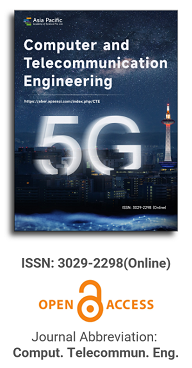
Full Issue
| View or download the full issue |
Issue release: 30 December 2023
Smart energy in large offices and organizations is an important research area of the Internet of Things (IoT). The energy efficiency of buildings is vital for the environment and global sustainability. To achieve satisfactory performance for this goal, WiFi access point (AP) indoor coverage is of high importance. As it costs a lot to add more WiFi to have good coverage in all parts of the office’s buildings, we consider relay node (RN) instead of adding more APs. So in this paper, we propose a novel RN placement in order to improve the indoor coverage of offices considering the signal attenuation using a path-loss model as the main measure for determining positions. The main problem is the placement of these RNs and the required number of them by considering existing APs. At first, we obtain the radio propagation model parameters by considering the data that are collected from the AP. Then based on these parameters, the proposed solution uses a genetic algorithm (GA) for RN placement optimization problem. The experimental results display the effectiveness of the proposed solution for the RN placement problem.
Issue release: 30 December 2023
Issue release: 30 December 2023
Multiple-Input Multiple-Output (MIMO) channel modelling is constantly researched, and the innovation of its three-dimensional (3D) models is the introduction of the elevation domain parameters, in particular the elevation angle of arrival (EOA) and elevation angle of departure (EOD) where their power angle spectrum (PAS) and their angular spread (AS) greatly impact the 3D MIMO performance. PAS is the basic characteristic used to estimate and model angular dispersion in wireless channels. Propagating signal waves are constrained into a path having an angle within which the power is contained. One of the scenes that will have a significant effect on these parameters is the relative height between the BS and the building. They will also depend on the distance between the base station (BS) and the user equipment (UE). In this work, we investigate the effect of distance and height on the power angle spectrum of a street canyon and a high-rise scenario in the urban environment. The wireless Insite X3D ray tracing engine and a 3D digital map of the environment were used for the simulation. It is seen that the elevation power spectrum (EPS) in the elevation domain decreases with distance and height in both scenarios for the arrival and departure. The appearance of multiple peaks leads to a double-normal distribution in the arrival of the high-rise as height increases, which is a result of reflections from multiple clusters. The azimuth power spectrum (APS) in the azimuth domain also decreases with distance and height at the arrival but increases with distance and height at the departure. The result of the power angle spectrum in this work can be used for modelling angular dispersion as well as designing adaptive antennas for wireless communication.
Issue release: 30 December 2023
This paper deals with the design of an automated system to increase the yield of shrimp farming in the country. There are three factors involved in designing an aqua form automation system (AFAS). The first factor is to get the maximum egg to postlarva conversion. The second factor is to make the farming environment contamination-free, and the third factor is to conserve electrical energy, which is the need of the hour for the economy. Several experiments have been conducted to make the system robust, foolproof, and ready for commercial usage. This system has reduced manpower while giving leverage to the consumer in terms of investment.
Issue release: 30 December 2023
Recently, there has been a gigantic amount of attention that received by blockchain technology. Serving as an entrenched ledger, this technology allows a decentralized transaction. In modern life, numerous fields as applications of blockchain technology are emerging, which includes the Internet of Things (IoT), financial sector services, reputation system, and many more. Due to different properties like auditability, persistency, decentralization, and anonymity. blockchain technology serves extensively in academic and industrial sectors. Issues with security and scalability are the two main concerns that need a solution in regard to this technology. This paper represents a brief overview of blockchain technology. Furthermore, there are different challenges and advantages listed in this paper.
Issue release: 30 December 2023
Today is a generation of the satellite navigation system and every country needs its own positioning and secured services. GPS invention has given birth to a new era in technology. India in terms of population is highly dense and should have its own navigation system. High-level research is still going on for Navigation with Indian Constellation (NavIC) the Indian Regional Navigation Satellite System (IRNSS) to be developed for the frequency band L-band (1176.45MHz) and S-band (2492.08 MHz). In this paper, we summarize the attributes characterizing the NavIC antenna which includes patch size, polarization, Fractal attributes, etc. Similarly, the paper gives technical inputs to develop a compact and efficient NavIC antenna system for future L-band and S-band.

Prof. Maode Ma
Qatar University, Qatar
The field of computer and telecommunications engineering is rapidly advancing, with the following being some of the latest developments.
more
We are pleased to congratulate the first anniversiry of the journal of Computer and Telecommunication Engineering (CTE).
more
Owing to the tireless dedication of the editor-in-chief, editorial board members, and the in-house editorial team, we are proud to announce the successful online launch of the first issue of Computer and Telecommunication Engineering.
Asia Pacific Academy of Science Pte. Ltd. (APACSCI) specializes in international journal publishing. APACSCI adopts the open access publishing model and provides an important communication bridge for academic groups whose interest fields include engineering, technology, medicine, computer, mathematics, agriculture and forestry, and environment.


 Open Access
Open Access
.jpg)

.jpg)
